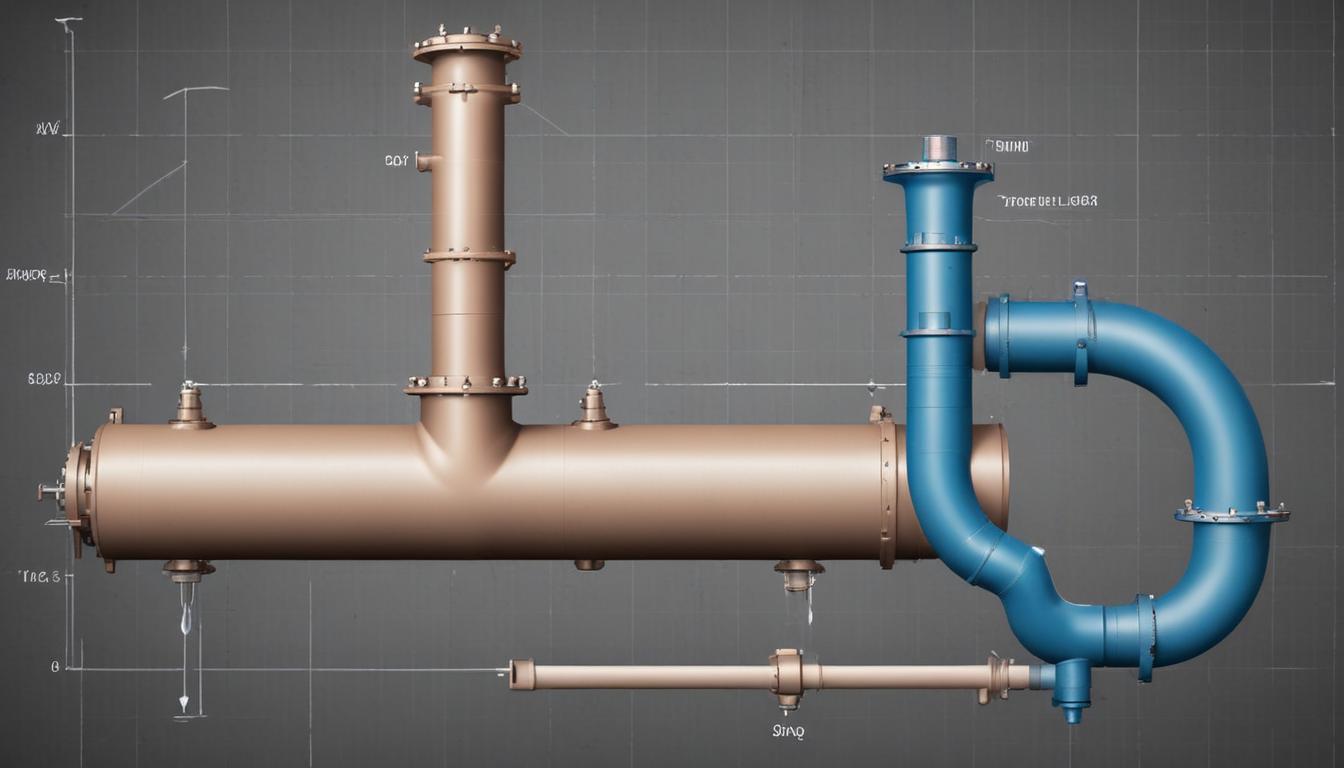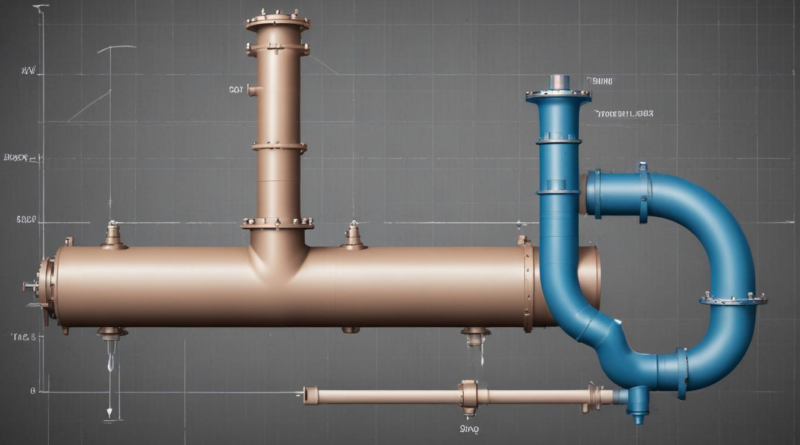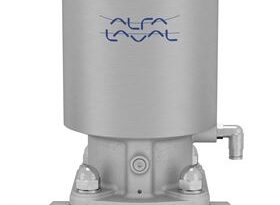understanding pump curves
Pump curves are essential tools for evaluating and selecting the appropriate pump for specific applications. They graphically represent the relationship between a pump’s performance metrics, enabling engineers and technicians to assess how a pump will operate under various conditions.
Typically, a pump curve chart includes several key elements:
| Parameter | Description |
|---|---|
| Flow Rate (Q) | Displayed on the horizontal axis, it measures the volume of fluid the pump can move, usually in gallons per minute (GPM) or liters per second (L/s). |
| Head (H) | Shown on the vertical axis, it indicates the height to which a pump can raise the fluid, typically measured in feet or meters. |
| Efficiency Curve | Represents the pump’s efficiency at different flow rates, helping identify the most energy-efficient operating point. |
| Power Consumption | Illustrates the electrical power required to drive the pump at various flow rates, usually expressed in horsepower (HP) or kilowatts (kW). |
| NPSH Required | Denotes the Net Positive Suction Head needed to prevent cavitation, ensuring the pump operates smoothly. |
Understanding how to read and interpret these curves is crucial for accurate performance assessment and effective selection of pumps. By analyzing the intersecting points of different curves, one can determine the optimal operating conditions that balance flow rate, head, efficiency, and power consumption.
- Performance Analysis: Evaluate how changes in flow rate impact head and efficiency.
- System Compatibility: Ensure the pump curve aligns with the system’s demand curve for seamless integration.
- Energy Optimization: Identify operating points that minimize energy usage while meeting required performance criteria.
Additionally, pump curves aid in troubleshooting by highlighting deviations from expected performance, which may indicate wear, blockages, or other issues affecting the pump’s functionality. Proper interpretation of these curves ensures that pumps operate efficiently, reliably, and within their designed parameters, ultimately leading to better system performance and longevity.
key components of pump curves
Each component of the pump curve provides critical information for assessing a pump’s performance and suitability for specific applications.
Flow Rate (Q) is displayed on the horizontal axis and measures the volume of fluid the pump can move, typically expressed in gallons per minute (GPM) or liters per second (L/s). This parameter is essential for determining whether the pump can handle the required capacity of the system. Accurate flow rate assessment ensures that the pump meets the demand without overloading or underperforming.
Head (H) is represented on the vertical axis and indicates the height to which a pump can raise the fluid, usually measured in feet or meters. The head reflects the energy imparted to the fluid to overcome the system’s resistance, including factors like elevation changes, pipe friction, and fittings. Understanding the head is crucial for selecting a pump that can achieve the necessary pressure to maintain system performance.
Efficiency Curve illustrates the pump’s efficiency at various flow rates. This curve is pivotal for identifying the most energy-efficient operating point, helping to minimize energy consumption and operational costs. By analyzing the efficiency curve, engineers can select pumps that not only meet performance requirements but also operate sustainably.
Power Consumption shows the electrical power required to drive the pump at different flow rates, typically expressed in horsepower (HP) or kilowatts (kW). This information is vital for sizing the electrical infrastructure and budgeting for operational expenses. Understanding power consumption aids in evaluating the overall cost-effectiveness of the pump selection.
NPSH Required (Net Positive Suction Head) denotes the minimum pressure needed at the pump’s inlet to prevent cavitation, a phenomenon that can cause damage and reduce pump performance. Adequate NPSH ensures smooth and reliable pump operation, safeguarding the longevity and efficiency of the pump within the system.
By meticulously analyzing these components, professionals can make informed decisions during the pump selection process, ensuring optimal performance, energy efficiency, and system compatibility.
- Flow Rate (Q): Determines the volume capacity needed for the application.
- Head (H): Ensures the pump can overcome system resistance and achieve desired pressure levels.
- Efficiency Curve: Identifies the most energy-efficient operating points to reduce costs.
- Power Consumption: Assists in electrical infrastructure planning and cost estimation.
- NPSH Required: Prevents cavitation, ensuring reliable and damage-free pump operation.
Understanding these key components of pump curves is essential for accurate performance assessment and effective pump selection, ultimately leading to enhanced system reliability and efficiency.
interpreting performance data
Interpreting the data presented in pump curves involves a comprehensive analysis of how a pump performs under various operating conditions. By carefully examining the different curves and their intersections, professionals can determine the most suitable operating point that aligns with system requirements and optimizes performance.
Identifying the Best Efficiency Point (BEP) is a critical aspect of performance interpretation. The BEP is the flow rate at which the pump operates most efficiently, minimizing energy consumption and reducing wear and tear on the pump components. Operating near the BEP ensures optimal performance and extends the pump’s lifespan. Deviations from the BEP can lead to increased energy usage, higher operational costs, and potential mechanical issues.
Analyzing the System Curve in conjunction with the pump curve allows for a better understanding of how the pump will perform within a specific system. The system curve represents the relationship between the flow rate and the head required by the system. By overlaying the system curve onto the pump curve chart, the intersection point indicates the operating condition where the pump meets the system’s demands. This comparison is essential for ensuring that the selected pump can handle the required flow and head without overloading or underperforming.
Evaluating Efficiency and Power Consumption involves examining the efficiency and power curves on the pump chart. The efficiency curve helps identify the flow rate at which the pump operates with maximum efficiency, while the power consumption curve indicates the electrical power required at different flow rates. Balancing these factors is crucial for achieving energy-efficient operations and managing operational costs effectively.
NPSH Analysis (Net Positive Suction Head) is another vital component when interpreting pump performance data. Ensuring that the available NPSH exceeds the required NPSH is essential to prevent cavitation, which can cause significant damage to the pump and reduce its efficiency. By analyzing the NPSH curves, engineers can verify that the system provides adequate suction head to maintain smooth and reliable pump operation.
Impact of Operational Variations such as changes in flow rate or head requirements can significantly affect pump performance. By using pump curves, it is possible to predict how these variations will influence the pump’s operation. For instance, a slight increase in system demand may move the operating point away from the BEP, necessitating adjustments to maintain optimal performance. Understanding these dynamics allows for proactive management and quick adjustments to maintain system integrity.
Performance Data Interpretation Techniques:
- Overlaying System and Pump Curves: Plot the system curve alongside the pump curve to identify the operating point.
- Determining BEP: Locate the point where the efficiency curve peaks to find the most efficient operating condition.
- Assessing NPSH Margin: Ensure that the available NPSH is comfortably above the required NPSH to prevent cavitation.
- Comparing Power Consumption: Analyze the power curve to select a pump that meets performance needs while minimizing energy usage.
- Scenario Analysis: Simulate different operating conditions to understand potential impacts on pump performance and make informed selection decisions.
Example Interpretation: Consider a pump curve where the BEP is at 100 GPM with a head of 50 feet and an efficiency of 75%. If the system curve intersects the pump curve at 120 GPM and 48 feet, the pump is operating slightly above its BEP. While this may still offer acceptable performance, it results in a modest decrease in efficiency and a slight increase in power consumption. Understanding this shift allows engineers to decide whether to adjust the system requirements or consider selecting a different pump that better matches the desired operating conditions.
Utilizing Performance Data for Selection: The detailed interpretation of pump curves not only aids in assessing current performance but also plays a pivotal role in the pump selection process. By matching the pump’s performance characteristics with the system’s requirements, engineers can choose pumps that deliver reliable, efficient, and cost-effective operations. This ensures that the selected pump will meet the demands of the application while maintaining optimal performance throughout its operational lifespan.
In summary, interpreting performance data from pump curves is a multifaceted process that involves analyzing various performance metrics, understanding system interactions, and making informed decisions to optimize pump selection and operation. Mastery of these interpretation techniques is essential for achieving efficient and reliable pumping systems.
factors affecting pump efficiency
 Several factors influence the efficiency of a pump, impacting its overall performance and the effectiveness of its selection for specific applications. Understanding these factors is essential for optimizing pump operations and ensuring energy-efficient performance.
Several factors influence the efficiency of a pump, impacting its overall performance and the effectiveness of its selection for specific applications. Understanding these factors is essential for optimizing pump operations and ensuring energy-efficient performance.
1. Fluid Properties
The characteristics of the fluid being pumped play a significant role in determining pump efficiency:
| Property | Impact on Efficiency |
|---|---|
| Viscosity | Higher viscosity fluids increase friction losses, reducing pump efficiency. |
| Density | Increased density requires more energy to achieve the same flow rate, affecting efficiency. |
| Temperature | Temperature changes can alter fluid properties, impacting pump performance and efficiency. |
| Corrosiveness | Corrosive fluids can cause wear and tear, diminishing pump efficiency over time. |
2. Flow Rate and Operating Point
Operating a pump near its Best Efficiency Point (BEP) is crucial for maximizing efficiency. Deviations from the BEP can lead to:
- Reduced Efficiency: Operating significantly above or below the BEP decreases energy efficiency.
- Increased Wear: Non-optimal flow rates can cause excessive vibration and mechanical stress.
- Higher Energy Consumption: Pumps operating away from the BEP require more power to maintain desired performance.
3. System Design and Layout
The configuration of the piping system affects pump efficiency through:
- Pipe Diameter: Incorrect pipe sizing can result in higher friction losses, reducing pump efficiency.
- Fittings and Valves: Excessive bends, elbows, and restrictive valves increase resistance, lowering efficiency.
- Elevation Changes: Significant elevation differences can demand more head from the pump, impacting efficiency.
4. Pump Design and Type
Different pump designs offer varying levels of efficiency based on their construction and intended use:
| Pump Type | Efficiency Characteristics |
|---|---|
| Centrifugal Pumps | Generally efficient for a wide range of flow rates; efficiency can decline sharply off the BEP. |
| Positive Displacement Pumps | Maintain consistent flow regardless of system pressure; efficiency depends on precise operation and minimal leakage. |
| Turbine Pumps | High efficiency at specific flow rates and heads; suitable for large-scale applications. |
| Axial Flow Pumps | Efficient for high flow, low head applications; efficiency decreases with higher head requirements. |
5. Mechanical Condition and Maintenance
The physical state of the pump and its components significantly affects efficiency:
- Impeller Wear: Worn impellers reduce the pump’s ability to impart energy to the fluid, decreasing efficiency.
- Seal Integrity: Leaks in seals can lead to energy losses and reduced pump performance.
- Bearings and Alignment: Misaligned or worn bearings increase friction, lowering efficiency and potentially causing damage.
- Lubrication: Proper lubrication minimizes friction losses, maintaining efficient operation.
6. Operational Conditions
External factors and how the pump is operated influence its efficiency:
- Suction Conditions: Poor suction conditions, such as insufficient NPSH, can cause cavitation, drastically reducing efficiency.
- Ambient Temperature: Extreme temperatures can affect pump materials and lubrication, impacting efficiency.
- Vibration and Resonance: Excessive vibrations can indicate alignment issues or bearing failures, decreasing efficiency.
7. Energy Supply Quality
The quality and stability of the electrical supply affect pump efficiency:
- Voltage Stability: Fluctuations in voltage can lead to inefficient motor operation.
- Power Factor: A poor power factor can reduce the efficiency of the electrical system powering the pump.
8. Control Systems and Automation
Effective control systems enhance pump efficiency by optimizing operational parameters:
- Variable Frequency Drives (VFDs): Allow adjustment of pump speed to match system demand, improving efficiency.
- Automated Monitoring: Continuous monitoring enables proactive maintenance and optimization of pump operations.
- Pressure and Flow Controls: Maintain desired parameters without overworking the pump, enhancing efficiency.
9. Installation Practices
Proper installation ensures that the pump operates as intended, maintaining high efficiency:
- Foundation Stability: A stable foundation minimizes vibrations and mechanical stresses.
- Proper Alignment: Ensures that pump and motor shafts are aligned to prevent undue wear and energy losses.
- Pipeline Connections: Smooth and correctly sized connections reduce turbulence and resistance.
By considering and addressing these factors, engineers and technicians can optimize the efficiency of pumps, leading to enhanced performance, reduced energy consumption, and prolonged equipment lifespan. Effective management of these elements is crucial for the successful selection and operation of pumping systems in various industrial and commercial applications.
applications and selection
Pump curves play a pivotal role in determining the most suitable pump for a wide array of applications across various industries. By providing a graphical representation of a pump’s performance characteristics, these curves facilitate informed decision-making during the selection process, ensuring that the chosen pump meets the specific demands of each application efficiently and reliably.
Industrial Applications:
- Water and Wastewater Treatment: Pumps in these applications must handle large volumes of water with varying levels of solids and contaminants. Pump curves help in selecting pumps that can maintain consistent flow rates and overcome the head requirements imposed by treatment processes and pipeline resistances.
- Chemical Processing: In chemical industries, pumps often deal with corrosive and abrasive fluids. Utilizing pump curves allows engineers to choose materials and pump types that can withstand harsh conditions while maintaining optimal performance.
- Oil and Gas: The extraction and transportation of oil and gas require pumps that can handle high pressures and viscous fluids. Pump curves assist in selecting pumps that provide the necessary head and flow rate to ensure efficient extraction and pipeline transport.
- Power Generation: Power plants require precise pump performance to manage cooling systems and feedwater supply. Pump curves ensure that pumps can meet the high reliability and efficiency standards necessary for continuous power generation.
Commercial and Residential Applications:
- HVAC Systems: Heating, ventilation, and air conditioning systems rely on pumps to circulate water and refrigerants. Pump curves help in selecting pumps that provide adequate flow rates and pressure to maintain system efficiency and occupant comfort.
- Building Water Supply: Ensuring a consistent and sufficient water supply to high-rise buildings involves selecting pumps that can handle the required head and flow rates, as indicated by their pump curves.
- Irrigation Systems: Agricultural irrigation demands pumps that can deliver large volumes of water over varying distances and terrains. Pump curves aid in identifying pumps that can achieve the necessary performance for efficient water distribution.
Specialized Applications:
| Application | Key Selection Criteria |
|---|---|
| Fire Protection Systems | High reliability and the ability to deliver large flow rates at low heads to ensure rapid response during emergencies. |
| Pharmaceutical Manufacturing | Precision in flow control and the ability to handle sterile and sensitive fluids without contamination. |
| Food and Beverage Processing | Sanitary pump designs that comply with hygiene standards and can manage various viscosities and temperatures. |
Selection Process Considerations:
When selecting a pump for a specific application, several factors must be taken into account to ensure optimal performance and longevity. Utilizing pump curves in this process involves:
- Assessing System Requirements: Determine the necessary flow rate and head based on the system’s demand curve. Overlay this with the pump curve to find the appropriate operating point.
- Evaluating Efficiency: Identify the point on the pump curve where efficiency is maximized. Selecting a pump that operates near its Best Efficiency Point (BEP) reduces energy consumption and wear.
- Considering Fluid Characteristics: Analyze the properties of the fluid, such as viscosity, temperature, and corrosiveness, to select a pump with suitable materials and design features.
- Reviewing NPSH Requirements: Ensure that the available Net Positive Suction Head (NPSH) in the system exceeds the pump’s required NPSH to prevent cavitation and maintain performance.
- Future Scalability: Consider potential changes in system demand. Selecting a pump with a curve that accommodates future increases in flow or head can provide flexibility and extend the pump’s usefulness.
Case Study:
Consider a municipal water supply system requiring a pump to deliver 500 gallons per minute (GPM) at a head of 100 feet. By analyzing the pump curves, engineers identify several models that can meet these requirements. They further evaluate the efficiency curves to select a pump that operates near its BEP at 500 GPM, ensuring minimal energy consumption. Additionally, they verify that the system’s NPSH is adequate to prevent cavitation, and they choose a pump material resistant to potential corrosive elements in the water supply. This comprehensive selection process, guided by pump curves, results in a reliable and efficient pump installation tailored to the specific needs of the municipal system.
Conclusion: Integrating pump curves into the selection process is essential for aligning pump performance with application requirements. By meticulously analyzing pump curves, professionals can ensure that the chosen pump not only meets the immediate demands of the system but also operates efficiently and reliably over its intended lifespan.




